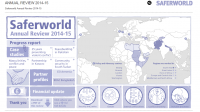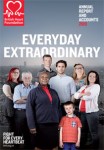Getting people to read what you write
The brutal truth is that most people aren’t that desperate to read what you write.
When your appeal letter drops through someone’s letter box, it’s easily tossed aside. On your website, you have just seven seconds to grab someone or they’ll move on. When a potential funder receives your annual review, they’ll just skim read it. Then add it to the stack from other organisations also looking for money.
You need techniques to make your writing “sticky” – to get people to read and take notice. Here are some top tips:
Make it useful
Say you’re trying to communicate with children’s services commissioners. Could you complement your core material (what you do, the impact you have) with something that is also useful for your audience? Perhaps a Top 10 Online Resources for Commissioners, or How to Save Time and Money When Commissioning Services report? Hook your reader with something useful and valuable to them, then use it as a lever to get your own messages across.
With every publication, ask yourself: is this interesting and valuable to my audience, or is it just what I want to say?
Grab attention
When someone flicks through your publication, you have just seconds to catch their attention. But how?
Headers and standfirsts (the line or two under the headline summarising the copy) are key.
Ensure your headline is striking, tells the audience what the piece has to do with them, and tells them why they should read on. Try to tell the whole story of your piece, including your call to action, across your headlines and subheadings. Skim readers need to get the message even if they don’t read the detail.
Ditch the puns
Those oh-so-clever headlines (“Government changes its tuna on fisheries policy”) you felt so smart writing in the office don’t often work when they make it into print or online. Your reader will at best be puzzled, at worst put off. Don’t kid yourself they will be so intrigued by the cryptic headline they’ll read on.
Leave the puns to the tabloid hacks.
Strong images with good captions
Strong images will draw readers to your work, but don’t waste your caption by simply describing the picture. They can see it! Instead, use the caption to relate your key messages, and attract the audience to read the rest of the copy.
Go short and simple
People will give up on your writing if it is difficult to read. Make sure sentences are short (try less than 30 words) and paragraphs brief. Eliminate jargon and acronyms – people should to be able to understand what you write the first time they read it.
Break it down
A page packed with dense copy to wade through will put many readers off. Break down your copy to make it easier to digest: use bullet points (but not too many), boxes, lists, A to Zs, top tips and other formats to make difficult information more digestible. Use lots of subheadings to break up text, particularly on the web. White space gives the eyes a rest, and makes your copy less daunting to read.
Use transition copy
“After the break, a BIG shock!” That’s what you hear on programmes like The X Factor to get you to tune in again. You can use this cliffhanger technique in your own copy to keep people reading.
“Transition copy” is the name for little phrases like “you won’t believe what happened next” and “the truth will surprise you” which, when read, almost compel the reader to keep reading. Drop a few in your copy, say every half a page, to give your writing pace and deftly carry the reader on to the next segment.
I can help you engage your audience – contact me today.



